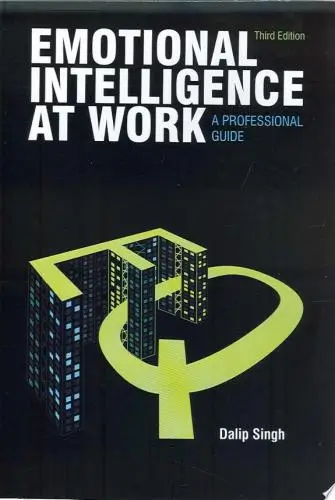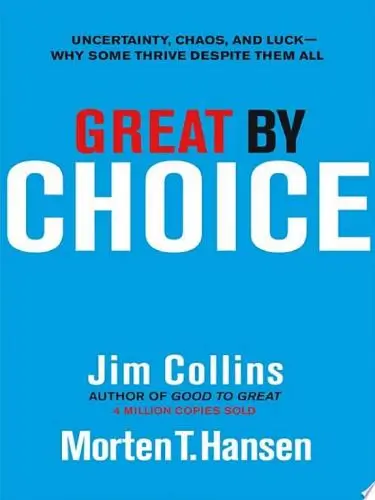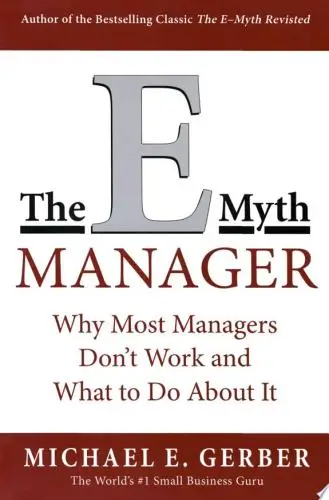The First 90 Days
Proven Strategies for Getting Up to Speed Faster and Smarter
What's it about?
The book 'The First 90 Days' by Michael D. Watkins provides a comprehensive guide for professionals transitioning into new roles or organizations. It offers practical strategies, tools, and frameworks to help leaders succeed in their first 90 days. With a focus on effective leadership, the book explores topics such as building relationships, diagnosing organizational culture, securing early wins, and accelerating learning. It is a valuable resource for anyone seeking to make a successful career transition and achieve long-term success in their new role.
About the Author
Michael D. Watkins is an American author, consultant, and professor specializing in leadership and career transitions. He is widely recognized for his best-selling book "The First 90 Days: Proven Strategies for Getting Up to Speed Faster and Smarter." Watkins is a professor at the Harvard Business School and the founder of Genesis Advisers, a leadership development consultancy. He has also written several other books and articles on leadership, team dynamics, and organizational change. Watkins' expertise lies in helping executives and leaders navigate critical career transitions effectively.
10 Key Ideas of The First 90 Days
- Prepare Yourself
- Accelerate Your Learning
- Match Strategy to Situation
- Negotiate Success
- Secure Early Wins
- Achieve Alignment
- Build Your Team
- Create Alliances
- Manage Yourself
- Accelerate Everyone
Have you ever found yourself on the cusp of a new chapter in your professional life, feeling both exhilarated and slightly overwhelmed? Whether it's stepping up to a higher role within your current organization or diving into an entirely new company culture, the transition can be as daunting as it is exciting. Imagine standing at the edge of two cliffs – behind you lies familiar territory; ahead, an uncharted expanse awaits. The leap between them requires more than just knowledge; it demands a transformation in how you approach learning and growth.
Embracing Change for Success
When we step into new roles, we're often tempted to cling to our old ways like a safety blanket. But success hinges on our ability to shed these past habits and fully immerse ourselves in the nuances of our fresh responsibilities. It's about self-awareness and recognizing that what worked before may not be effective now.
The journey begins with identifying potential vulnerabilities—those blind spots where our problem-solving preferences might not align with what's needed. Are we too focused on technical issues when strategic thinking is required? Or perhaps we lean towards quick fixes instead of sustainable solutions?
Moreover, adapting isn't just about personal change; it involves understanding complex organizational cultures and building bridges with key stakeholders whose support could make or break your success story.
Navigating New Terrain
Imagine navigating through dense fog without a compass—that’s akin to transitioning without clear strategies:
- Transition Challenges: Picture trying to find balance on uneven ground—that’s what balancing breadth versus depth feels like in a new position.
- Onboarding Strategies: Think of this as orienteering—a systematic exploration where understanding business terrain (orientation), forming alliances (stakeholder connection), syncing maps (alignment), and blending into the environment (cultural adaptation) are vital survival skills.
- Learning How To Learn: This is akin to developing night vision in darkness—it’s uncomfortable but crucial for seeing hidden obstacles along your path.
By relearning how to learn amidst steep curves, leaders can turn early setbacks into valuable lessons rather than insurmountable barriers.
Building Your Support Network
As one climbs higher up the career ladder, imagine extending ropes not only upwards but also sideways—to peers who offer political savvy—and downwards—to those offering grounded insights from different levels within an organization.
Tactics
These tactics serve as practical tools for making that leap across professional chasms:
- Establishing clear breakpoints helps us mentally prepare for transitions by marking an end-and-beginning threshold—like throwing a farewell party for your former self while rolling out the welcome mat for who you'll become.
Leaders must actively sculpt their networks beyond mere technical guidance—they need mentors who provide wisdom on navigating organizational politics alongside those offering expertise specific to their field.
In conclusion, mastering purposeful practice isn’t merely about acquiring skills—it’s about evolving one's mindset and network according to each unique leadership landscape encountered. By doing so diligently, professionals don't just survive transitions; they thrive through them—turning unfamiliar territories into conquered lands marked by growth and achievement.
Key Examples/Data
1. Julia Gould's Promotion
Julia Gould, a successful marketing professional, was promoted to lead a major new product development project. However, her micromanagement tendencies and reluctance to let go of her previous role led to her failure in the new position. This example illustrates the challenges of transitioning from a functional role to a cross-functional leadership role and the need to adapt to new responsibilities.
2. David Jones at Energix
David Jones, recruited from a global manufacturing firm to lead R&D at Energix, faced challenges in adapting to the new company's culture and processes. His experience highlights the difficulties of joining a new organization and the importance of understanding and adapting to the new cultural context.
3. Business Orientation
The concept of business orientation is emphasized as a crucial aspect of onboarding into a new company. It involves understanding the organization as a whole, including its financials, products, strategy, operating model, and talent management systems.
4. Stakeholder Connection
The necessity of developing productive working relationships with key stakeholders is highlighted. It is essential to build both vertical and lateral relationships early in the transition to ensure effective integration into the new organization.
5. Expectations Alignment
The importance of aligning expectations with the new organization is emphasized. It is crucial to verify and adjust expectations about mandates, support, and resources to avoid potential misunderstandings and resistance.
6. Cultural Adaptation
The daunting challenge of adapting to unfamiliar cultures in new organizations is discussed. Understanding the overall culture and its manifestation in the specific unit or organization is crucial for successful integration.
Quotes
- "It’s a mistake to believe that you will be successful in your new job by continuing to do what you did in your previous job, only more so."
- "Preparing yourself means letting go of the past and embracing the imperatives of the new situation to give yourself a running start."
- "The move from one position to another usually happens in a blur. You rarely get much notice before being thrust into a new job."
- "You have been offered your new position because those who selected you think you have the skills to succeed."
- "Relearning how to learn can be stressful. So if you find yourself waking up in a cold sweat, take comfort."
- "Preparing yourself for a new role turns out to be hard work, and some of the barriers may lie within you."
The First 90 Days Summary: Common Questions
Diving into a new role, with its myriad challenges and potential pitfalls, can be daunting. 'The First 90 Days' by Michael D. Watkins is the toolkit you didn't know you needed, illuminating the path forward during crucial transitions. It doesn't just lay out the challenges; it provides the blueprint for turning them into opportunities.
Watkins' depth of understanding of leadership transitions shines through each page. His emphasis on the significance of the initial phase in any new role, paired with the importance of momentum and early wins, offers readers a structured approach to change. While there's a richness of content, some might feel a tad overwhelmed by its case-study-heavy nature. But these real-world examples serve as robust pillars, holding up the principles Watkins presents.
Among the multitude of leadership and management guides, 'The First 90 Days' stands tall, indispensable for those venturing into new professional terrains. Having journeyed through its pages, I'd comfortably rate it a robust 4.8 out of 5. It's more than just a book; it's a mentor for those crucial early days in a new role.
Experience Personalized Book Summaries, Today!
Discover a new way to gain knowledge, and save time.
Sign up for our 7-day trial now.
No Credit Card Needed

Similar Books

Emotional Intelligence at Work
Dalip Singh
Seeing the Big Picture
Kevin Cope
Leadership Is Concept Heavy
Dr. Enoch Antwi
Great by Choice
Jim Collins
The Leader′s Guide to Coaching in Schools
John Campbell
Preparing School Leaders for the 21st Century
Stephan Gerhard Huber
The E-Myth Manager
Michael E. Gerber
Leadership Is Language
L. David Marquet
Start-up Nation
Dan Senor
The Founder's Dilemmas
Noam WassermanTrending Summaries

Peak
Anders Ericsson
Never Split the Difference
Chris Voss
Smart Brevity
Jim VandeHei
The Psychology of Money
Morgan Housel
The First 90 Days
Michael D. Watkins
Atomic Habits
James Clear
Thinking, Fast and Slow
Daniel Kahneman
The Body Keeps the Score
Bessel van der Kolk M.D.
The Power of Regret
Daniel H. Pink
The Compound Effect
Darren HardyNew Books

Job Interviews For Dummies®
Joyce Lain Kennedy
Job Interviews In A Week
Alison Straw
Handbook of Career Development
Gideon Arulmani
The Art of Spending Money
Morgan Housel
$100M Offers
Alex Hormozi
A Candle for Kiri
Edna Mae Holm
Principles of Marketing, Global Edition
Gary Armstrong
Serpent Rising: The Kundalini Compendium
Neven Paar
Feeling Is the Secret
Neville Goddard
